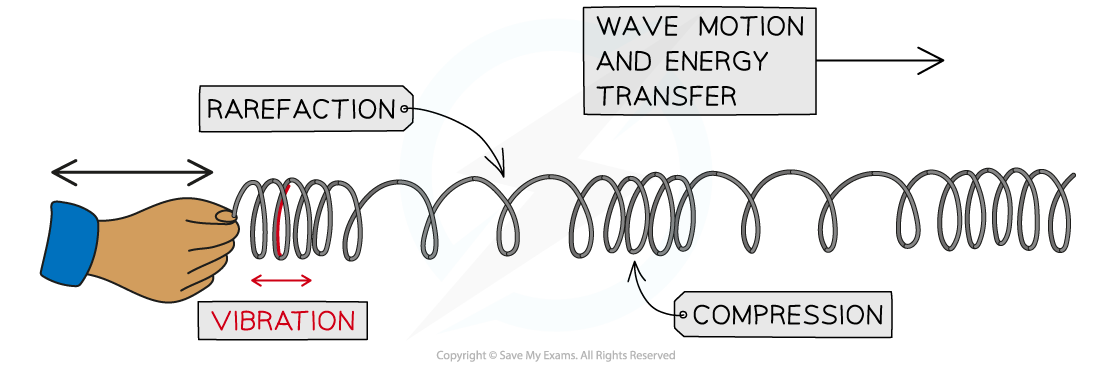Transverse & Longitudinal Waves (SQA National 5 Physics): Revision Note
Exam code: X857 75
Did this video help you?
Transverse waves
Waves can exist as one of two types:
Transverse
Longitudinal
Transverse waves are defined as:
Waves where the direction of vibration is at right angles to the direction of energy transfer
For a transverse wave, the oscillation (vibration) is perpendicular to (at right angles to) the direction the wave is travelling
Mechanical transverse waves can move in solids, and on the surface of liquids, but not in liquids or gases
Non-mechanical transverse waves can move in a vacuum
Transverse wave motion

Transverse waves can be seen in a rope when it is moved quickly up and down
Examples of waves that can be modelled as transverse are:
Electromagnetic waves (such as radio waves, visible light, X-rays etc)
Ripples on the surface of water
Seismic S-waves (secondary earthquake waves)
Longitudinal waves
Longitudinal waves are defined as:
Waves where the direction of vibration is parallel to the direction of propagation
For a longitudinal wave:
The energy transfer is in the same direction as the wave motion
They can move in solids, liquids and gases
They can not move in a vacuum (since there are no particles)
The key features of a longitudinal wave are where the points are:
Close together, called compressions
Spaced apart, called rarefactions
Longitudinal wave motion

Examples of waves that can be modelled as longitudinal waves are:
Sound waves
Seismic P-waves (primary earthquake waves)
Differences between transverse and longitudinal waves
Comparing transverse and longitudinal waves
Property | Transverse waves | Longitudinal waves |
|---|---|---|
Structure | Peaks and troughs | Compressions and rarefactions |
Vibration | Right angles to the direction of energy transfer | Parallel to the direction of energy transfer |
Vacuum | Only electromagnetic waves can travel in a vacuum | Cannot travel in a vacuum |
Material | Can move in solids and the surfaces of liquids | Can move in solids, liquids and gases |
Density | A constant density | The density of the wave changes |
Pressure | Has a constant pressure | Pressure in the wave changes |
Speed of wave | Depends on the material the wave is travelling in | Depends on the material the wave is travelling in |
Examiner Tips and Tricks
The key difference between transverse and longitudinal waves is the direction of the vibrations with respect to the direction of the wave itself. For transverse waves, these are perpendicular to each other, whilst for longitudinal waves, these are parallel.

Unlock more, it's free!
Did this page help you?